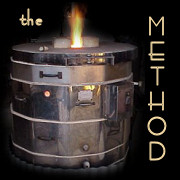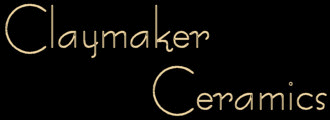
These sculptures are made of clay, either porcelain or stoneware. Glaze, steel, wood, and horsehair often contribute to the finished creation. They are constructed through the manipulation of slabs, wheel thrown forms, and solid masses of clay. Additive and subtractive methods are employed in addition to a wide range of non-conventional techniques. The clay is then dried and subjected to a preliminary firing, making it less fragile and preparing the surface to readily accept the glaze.
The glazing process begins at this point. Glazes are composed of the same materials as clays with mineral oxides added to produce the various colors. Glazes are designed to melt at specific temperatures and produce color and surface quality as a function of this temperature, their composition, and the atmosphere of the kiln during the glaze firing. This work is fired to cone 10, approximately 2300 degrees F., in a reducing, or oxygen deprived atmosphere. The finished product is termed "hi-fired" ceramic. These pieces are highly vitrified, stable, and exhibit subtlety of texture and color. This method of firing is historically related to those used in ancient China.
The finished pieces are generally suitable for either stand mounting or wall hanging.
